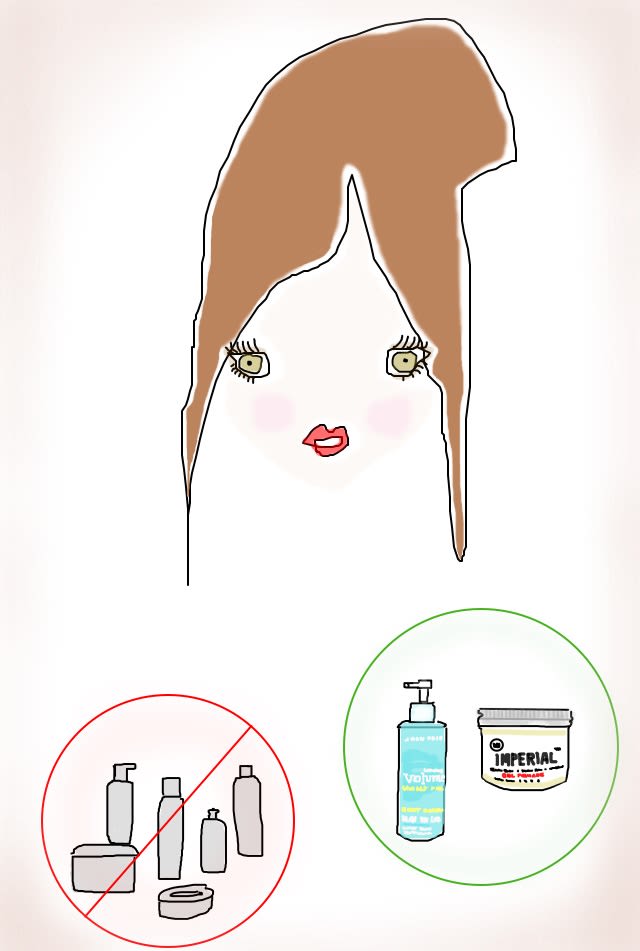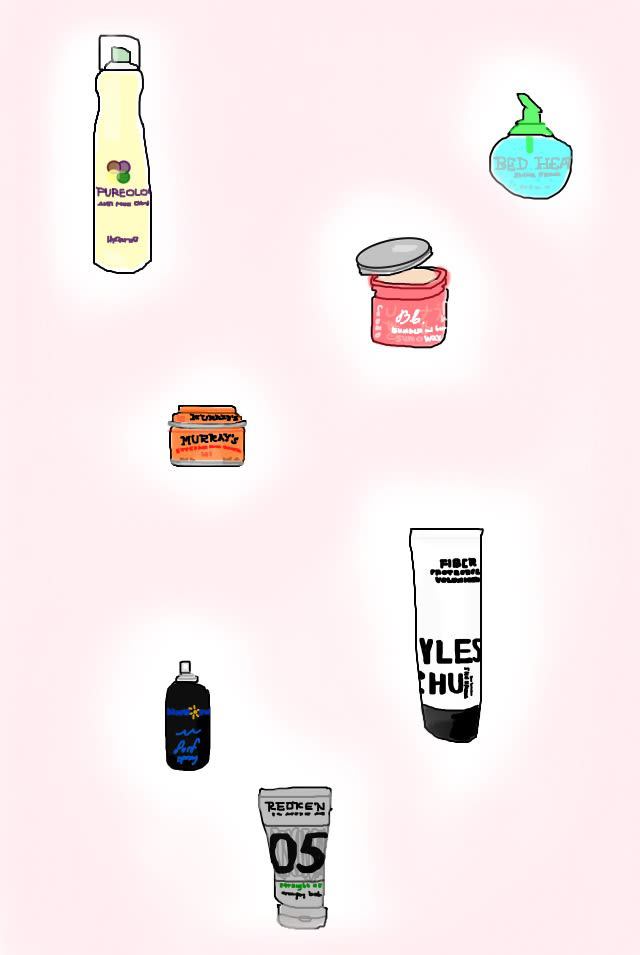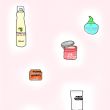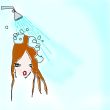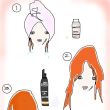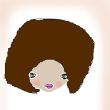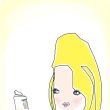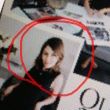There are a lot of questions in this life that seem to be largely unanswerable. Is there such a thing as 'fate'? Why do 'good' people do 'bad' things? What rhymes with orange? (Note: “door hinge” does not count.) Is there such a thing as listening to too many episodes of NPR’s RadioLab and WILL I OVERDOSE? Will anyone ever agree with me that House of Cards was kind of overrated? Why do every attractive pair of shoes make my feet hurt? Why me? (/Why not?)
Happily, friends, today is not about these questions. Today is about questions that are all too easily answered, and which, as a result, seem to so often not be asked. I’m guessing it’s collective embarrassment, so, you’re welcome, because I took all that on the chin. (I’m supposed to be a beauty editor, for chrissakes. I’m supposed to know things...:-/) Which brings us right around to the point: what the hell are we supposed to do with all of the hair styling products out there? Back in the day, the hairstylist Danilo waxed philosophical with me for a minute: “I really don’t think most people have any idea what to do with product,” he said. “They use too much and think it’s heavy and horrible or too little and don’t think it does anything.” Consider that an idea planted in my mind-soil, which is now coming to sprout into a big bountiful tree of knowledge with fruit for everyone (...mind-fruit?), myself included. Let's eat, shall we?
THE TEN COMMANDMENTS OF HAIR PRODUCTS (cue rapturous applause), gleaned from a few people who, well, know:
1.** Know Thyself (and streamline your arsenal): “Regardless of how simple or elaborate the hairstyle you want may be, using too many products, most of the time, is a disaster,” Serge Normant says. (Sidenote: he has one of those GREAT phone voices; I tried to keep him on the phone for an awkwardly long time.) “What is most important is knowing what kind of hair texture you have, and what you want your hair to look like as a result. Do you want frizz control? Do you want volume? Do you want shine? Is your scalp very dry? Is your hair very broken by highlights and color? You have to get to know your hair and evaluate its qualities and what you need. And then you just need one to two products**. I usually say if you feel like you need more than two hair products to actually do something with your hair, chances are you’re using the wrong products.”
2.** Know Thy Products: A quick cheat sheet for your viewing pleasure :**
Mousse: Everyone can use it, in quantities ranging from a tennis-ball to softball-size puff depending on your hair length. It’s an equal-opportunity boost in a can (it's lighter than a cream, and you’ll end up using less hairspray as a result), when distributed evenly throughout your hair. Brush it in and blow dry for weightless, root-lifting magic. (We like Color Proof’s LiftIt Foam.) Wax: Being maximum hold, and, you know, wax, it's best for those with choppy pixie or shag-length cuts. It can be tough to wash out, but, on the upside, won't disappear by the end of the day. Pomade: You might recognize it as a slightly 'goopier' (i.e. 'greasier' or 'creamier') version of wax—if you o.d., just imagine Crybaby. Pomades, like American Crew's version, give weight and impart texture (piece-y-ness) like a wax but also pack a bit of shine. Don’t use more than a penny-size drop, and remember to rub the product between your palms before applying it. Ye Olde Volumizer: Available in many shapes and forms (sprays, foams, etc.), the basic idea of a volumizer is to add height at the roots. They’re best for those with straight, limp locks or curly hair that tends to fall flat (so, saturate your roots at the scalp). People with fine or slightly wavy hair looking to amp up volume can look to texturizers— those’d be your salt sprays (Julien Dy’s DIY or Bumble’s), your gritty creams (Sumotech), your styling products that advertise a change in, well, your hair's texture. For those with medium to thick hair that lacks luster, rub a pea-sized drop of a shine serum or spray (Sachajuan has a greaaaat one; Tigi Headrush is an excellent spray; and Kérastase's Elixir Ultime is the gold standard) on in. If you blow dry your long curls or waves straight, you’re going to want a ping-pong-ball-sized amount of straightening balm, post-bathing (like Bumble's Straight Blow Dry), from the ends up—it can protect your strands from heat damage and frizzy texture. Hair lotion (a.k.a styling lotion, and we love Pantene’s Ultimate 10 BB Crème) is for thick and straight, or coarse and curly hair to produce a light, softer hold (and is usually alcohol-free). You can use a whole palmful, depending on your hair type—warm it in your palms and work it into wet hair from roots to ends. Hairspray is for all y’all (should you choose to accept it) if you want to lock in your style —and, after all this effort, why the hell wouldn’t you? Depending on the hold (soft, medium, strong) hairspray can be brushed out later, if you feel like you’re going to want to go from updo to beach waves within a five-hour period. (I’m all about Pantene’s Touchable Volume spray). If you want long and strong, well, snuggle on up to some Elnett.
3. Scrub [a dub dub!] Smart. “I always say, two shampoos, one conditioner,” says Janelle Chaplin, the creative director of cult Aussie brand Original&Mineral. “The first shampoo is to exfoliate the scalp and remove the world”—so really get in there and get all ‘90s Herbal Essences ad with it, which not only feels amazing but is scalp-stimulating—“and the second, to treat your type of hair [whether fine/thick/processed/etc]. The conditioner is to moisturize, from your mid-lengths to your ends. You don’t need to put conditioner on your roots.” Normant, on the other hand, is more of a one-and-done type of guy, but advises keeping a brush in the shower for even distribution of both shampoo and conditioner, and using about a quarter-size of both products—almond-sized if your hair is fine and shorter. (Ed note: Sulfate-free shampoos don’t foam, so you might need to adjust your method/amounts accordingly. Also, here 's a pair we like, and we love Phylia de M.)
4. Step by Step: “There are three stages to styling your hair,” Chaplin explains. “Step one: hydrate. That’s when you apply a product straight out of the shower—a leave-in conditioner, a detangler, or something like that to seal-in the moisture. Then, you leave your hair to air dry or blow-dry it until it’s about 80% dry, which brings you to step 2: Your foundation product, such as a mousse or a volumizer, which all should be used a little closer to the scalp. You can be relatively heavy-handed with these [see Commandment #2 for size guidelines],” She continues, “Step 3 includes your hairsprays, texturizing products, and sea-salt sprays or any shine serum or paste, applied from the ends to the mid-lengths of your hair. Style and go!” (She makes it sound so easy.) Why that order? Think of it like makeup, or skincare: you’re building from lightest to heaviest, to ensure the best blend. Try to also keep that in mind when you’re siphoning out portion sizes; the heavy, strong stuff is always used last and in the smallest quantities.
5. Go Slow, Start Small: Less is more. “If you want a smoky eye,” Normant says, “you don’t start out with full raccoon-eyes, you gradually build. It’s the same thing with hair. Use a little bit of a product and build up. If you don’t know the product that well and it’s some kind of a paste or a cream, start on the ends and go up towards the roots. Most of the time, your roots are the healthiest part of your hair, so, anything that is too texturizing, or too greasy should be kept away.” This doesn’t apply to volumizers and mousse, which are intended for use all over your head, in a thin layer. “People have a tendency to apply hair product like they would apply cream to their face—they just slap it on and rub it all over. But that's a mistake. You have to start from the bottom up, and if, at the end, you feel like you haven’t used enough product, you can add more—if you're hair is still wet, you still have time to add more product.”
6. Read the Rules: I have never been good at dry shampoo, which I always assumed to be largely idiot-proof (and subsequently, proof of my idiocy). I like 'day-after hair' as much as the next girl, but spritzes of the dry stuff always left me feeling like I had grimy strands, producty and clotted. This, Normant told me, while not entirely my fault, was a casualty of my inclination to take bottle directions more as “suggestions.” “This sounds really cliché,” he says, “but you really have to read the directions. Dry shampoo is not the easiest product to use and it never was—often the bottle says 'shake before using,’ and you have to do that, to mix its elements. Use it underneath your hair and focus it on the roots and just a little bit on the lengths. There’s a distance [from which to spray at your head] that’s specified on the bottle and there’s a reason for it—ten inches or so away from the head is optimal for the product to diffuse itself. Then, brush it out and use a blow dryer to remove the excess powder. And don’t expect your hair to feel squeaky clean, because it isn’t. Dry shampoo is meant to extend a blow dry for a couple of hours, maybe a day,”
7. There is, Sometimes, a Need for Speed: I wouldn’t say that I’ve always avoided hair gel, because I don’t think I ever thought about it enough to avoid it. There’s the whole There's Something About Mary thing , for one, and the peaked prows of boys heads in the early 00‘s (when that whole flipped up “perma-hair-visor” thing was hot), but sure, there’s a time and place for it. It’s one easy way to get that enviable rocker girl texture look, or the so-sleek-you-could-bounce-a-quarter-off-it pulled back pony or chignon. Gel is all about control, friends. It’s like your slightly overbearing boyfriend who might be bad for you in the long run but sometimes really does have your best interests in mind. And when the occasion calls for it, Normant noted, time matters. “A gel dries faster than other products, and if you don’t apply it evenly everywhere you could have a bit of an issue,” he said. “With long hair, it usually gets deposited right away on the front part, which is where most people start”—for the shorter of ‘do who are looking for a polished pixie, it’s easier, just try to spread it evenly—“you have to be quite fast to dry your hair after you apply it, otherwise it gets crunchy and you have to slightly re-wet it in order to style. But sometimes when your hair is really flat and has a really hard time to lift, a gel can be great.” But be aware, it can flake (yeesh).
8.** Some Things Are “Classic” for a Reason: **Reconsider hairspray. Sure, it may remind you of your mother/grandmother/ballet instructor, and sure, what about the ozone layer/aerosols?! And sure, there’s the charm of the insouciant, rumpled, sexy bed-head thing we all know and love, but guess what? Hairspray does not equal helmet head. Hairspray lines the counters backstage at every single fashion show. It's in the kit of everybody who works with hair. It’d be a 'secret weapon' but it’s so obvious that we can’t even pretend it’s a 'secret.' “Nowadays people don’t use it as much,” Normant says, “ but I LOVE IT! I work all day on set, and from the first picture in the morning to the last of the day, you want the hair to look fresh, so I use quite a bit of medium-hold spray, and I just keep brushing it out and spraying it again. The key is to not spray it too close to the head, to keep the distance dictated on the bottle, and if it has a little UV protection? Perfect. In the summer, it gives you a little humidity control, and in the winter, you spray it on a brush and quickly, quickly whisk it through before it dries and no more static. It’s a very good tool.” Ya heard.
9. Your Hair is Part of You, and It Should Move: “One reason to not go overboard when it comes to the products is that you want your hair to be gorgeous and healthy and have that movement to it,” Chaplin notes. Way back when, the one-and-only Julien D'Ys told me hair “should always be touchable.” (Seems we’re all big into ‘touch’ in this hair game.) Normant concurs: “More than anything else, I’m into hair that you can see moving around and being alive. ‘Wanna touch’ hair is an important thing.”
10. Ask an Expert: Clueless? Whipsawed by your wandering eye in the beauty aisle? When all else fails, grab a glossy magazine and hightail it to the salon. “Find an image in a magazine of someone with hair that’s similar to yours, and do not hesitate to bring it to a hairstylist,” says Normant. “It's helpful!”
Or, you know, you could always ask us. No such thing as a 'stupid question,' and all that—or, anyways, we’ll always ask one for you.
—Alessandra Codinha
Illustrations by Karleigh Sherman.
